Everybody knows Tequila, and lately, more and more people know Mezcal. But few know that Tequila, in fact, is a type of Mezcal and even fewer are aware that there are way more Mexican spirits. And not all of them are made from agave - even though, admittedly, the majority are.
This article is about traditional Mexican spirits. Of course, Mexico also produces Whiskey and a lot of other stuff, too. But those do not originate in Mexico, and I save those for another time.
So, here is our overview of traditional Mexican Spirits, starting with the most popular one.
Tequila certainly is the clear number one on this list. The spirit is made from one particular kind of agave, the blue weber agave. And it has to be produced in one of the five Mexican states of Jalisco, Guanajuato, Michoacan, Nayarit, or Tamaulipas. Tequila comes in different types, classified by their quality and by the time they are aged.
Tequila also is one of the most famous spirits to have as a shot. And for some of us, this may have led to bad ideas and severe hangovers in the past. So, if you've had your share of Tequila shots already, try one of the many Tequila cocktails instead. For instance, the Spicy Grapefruit Margarita, the Tommy's Margarita, or another riff on a classic, the Oaxaca Old Fashioned. If it's close to the festive season, a White Chistmas Margarita Punch is quite an eye-catcher, too.
Mezcal is becoming more and more popular in recent years. The spirit is also made of agave, has a distinct smoky taste, and is not as strictly regulated as Tequila. It must be double-distilled and can be made of 30 different agave species, with the most common being Espadin. And just as for Tequila, you can get different types of Mezcal.
There are also fewer geographic restrictions, which brought the spirit on the radar of celebrities. As a result, we now have Casamigos Mezcal by George Clooney. Or Dos Hombres Mezcal by two of our favorite Breaking Bad actors, Bryan Cranston and Aaron Paul.
Yet, the majority of Mezcal still comes from Oaxaca, Mexico. If you have never tried Mezcal before, try a sip neatly to get an idea of what smoky taste means in the context of agave spirit. It can be quite an experience. To balance the intense smokiness, you can also beautifully incorporate Mezcal in cocktails.
Should you need advice on which Mezcal to buy, check out this list with our Mezcal recommendations.
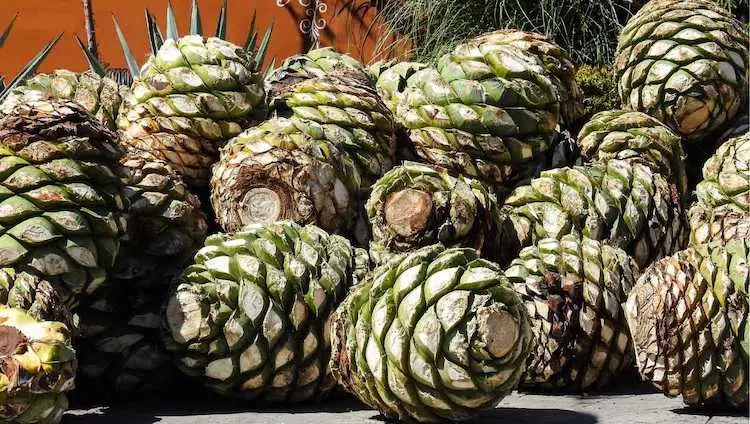
Sotol has had a bit of a difficult childhood. Once belonging to the category of Mexican agave spirits, it was re-classified when the plant used to make it, the so-called desert spoon, suddenly wasn't considered an agave anymore. But apart from the scientific/botanical aspect, Sotol nonetheless is closely related to Mezcal and Tequila.
The taste of Sotol is closer to Tequila than it is to Mezcal, simply because the production process doesn't involve roasting the plants, and therefore it's not a smoky spirit. The plant used for making Sotol grows anywhere between Texas, US, and Oaxaca, MX. And the taste of this Mexican spirit strongly depends on the territory where the plants get harvested.
Except for the Desert Door Distillery in Texas, Sotol is distilled only in Mexico, with Chihuahua, Coahuila, and Durango being the main producers.
Pox is the first spirit on this list that is in no way related to agave. Its base is fermented corn, wheat, and sugarcane. And it is even more of a niche product than Sotol. But, like Sotol, this ancient Mayan spirit slowly starts to gain some international recognition. In case you were wondering, Mexicans pronounce the "x" like "sh". So the correct way to say it would be "Posh".
Because the product is not legally regulated, you can get a whole variety of different Pox with flavors ranging from sweet, slightly rum-like to notes reminding of smoky corn tortillas.
When you want to use Pox in Cocktails, you can substitute it for Rum or for Gin even. Despite being a Mexican spirit, it's not the best choice for classic Mexican cocktails like the Margarita or the Paloma.
Charanda is best described as Mexican Rum. And it is made from sugarcane in the form of either juice, molasses, piloncillo, or a combination of those.
Piloncillo is unrefined sugarcane in solid form. After fermenting the sugar cane, the mash is distilled twice before being bottled.

The Mexican spirit is commercially available unaged only, but some experiment with barrel-aging.And even though it is referred to as Mexican Rum because of its base product, it tastes nothing like Rum. It has some unexpected floral and fruity notes mixed into the spiciness coming from the sugarcane.
In the Purépecha language, Charanda means red-colored soil, which derives from the hill range Cerro de la Charanda, where the first distillery was built in the 16th century. And the characteristics of the spirit depend a lot on the territory of origin.
Therefore, since 2003, Charanda has been officially a protected denomination of origin spirit. Since then, only products made from sugarcane growing and being distilled in one of 16 municipalities (from a total of 113) within the Mexican state of Michoacán can be called Charanda. So the territorial restriction is a lot stricter than it is for Tequila.
However, the passion for distilling Charanda also is way less than for Tequila. And where once were almost 100 distillers, there are only about 6 or 7 left today. And because the name is so little known, these producers write aguardiente or artisanal Rum on their bottles. But with the rise of Mezcal and Sotol, Charanda, too, prepares for a comeback.
Now we're back with the Mexican spirits from agave again. Raicalla basically is a Mezcal produced outside the designated Mezcal states. Funnily enough, the largest part of the production happens in Jalisco, the state primarily associated with Tequila.
As for Mezcal, the agave hearts are roasted before distillation. But unlike other Mexican spirits that need to be double-distilled, Raicilla is usually single-distilled. It has a four times longer fermentation process than Mezcal and can be made of any agave species.
Because of the extended production process and the countless agave varieties used, the flavor profile of Raicilla is hard to pin down. It has a massive range. Yet, usually, it is pretty acidic and not the ideal Mexican spirit to use in cocktails.
Raicilla once was the drink of the poor and, as such, first prohibited and then heavily taxed. Production moved underground, quite similar to the Irish Poitín. And because taxes were only on spirits made from the piña, peopled lied when tax collectors became suspicious. They said they used the roots instead of the piña - of course, they didn't. But it still manifested the name Raicilla or little root.

Comiteco is yet another agave spirit, but it is solely made in one town in Chiapas, Comitán de Domínguez, and from the juice of one type of agave, the maguey Comiteco.
It is quite a smooth drink with an herbal and earthy aroma, but none of the smokiness we know from Mezcal or Raicilla. For Comiteco, neither the piña (heart) nor the pencas (leaves) of the agave are used. Instead, only agave sap is extracted from the piña and then distilled. This sap is also called aguamiel, which literally translates to honey water.
In the mid-1900s, the production of Comiteco was almost on one level with Tequila, but a dramatic shortage of maguey Comiteco brought it to a sudden halt. And to protect the few plants left, the spirit was banned in the 60s. And that ban was lifted only in the 90s when the population had fully recovered. Thankfully, these days, the production of Comiteco is way more sustainable than it used to be in the 1950s.
It's hard to pinpoint the taste of Comiteco. It's a bit like Rum mixed with agave and a hint of honey. But because it's so smooth, it makes a decent good cocktail ingredient.
Like Tequila, Bacanora is a sub-type of Mezcal. The Mexican spirit was issued an origin denomination bill in 2000 and since then can be made only from agave growing in designated municipalities in the state of Sonora.
And to round up that article nicely, tastewise, it occupies a spot right between Mezcal and Tequila, with the production method being more similar to that of Mezcal. It has a complex and peppery aroma with an earthy finish. And it carries a subtle smokiness, too.
First, Bacanora could be made from any wild agave plant, but the more popular it became, the more refined got the production process. And eventually, only Agave Pacifica was deemed suitable for making the spirit.
And Sonorans loved this new, smooth spirit. So much, in fact, that government put an end to it. Not because of any shortage in agave, but because people drank it every day, and things started to get out of hand. That was in the late 19th century, and it took almost 100 years for the ban to be lifted again. Since 1992, Sonorans can enjoy their favorite spirit in public again. Cheers to that!
A group of friends with a great passion for Sotol founded the Flor del Desierto Sotol brand. The story of three friends from Chihuahua founding Flor del Desierto has a genuinely fascinating script. It started with one of them winning a baking contest using Sotol as the secret ingredient.
And subsequently, the friends decided to find the best Sotol out there. In the process of doing so, they came across countless bottles of Sotol, but only a few of them could convince them.
Consequently, the brand does not distill its spirit but collects the best Sotols and releases them under its Flor del Desierto brand. Made from different distillers in different areas, each of their products shows another aspect of the Northern Mexican state of Chihuahua.
So each release of Flor del Desierto has its unique range of flavors, is distilled by a different master distiller, and showcases a unique type of terroir. That's also why the character of those spirits can vary wildly. And why it's so hard to predict if you like their latest release as much as the last one.
The aromas are fresh, sweet, and grassy - with hints of limestone. You can smell herbs, asparagus, and even lettuce.
The 47.5% ABV makes for a full-bodied Sotol that starts with smoky cedar notes. As the smoky flavors fade, you can taste eucalyptus, pine, anise, and cilantro combined with spicy notes from cloves and a subtle sweetness.
Overall, a very distinctive flavor profile for a Sotol that is nonetheless very pleasant in aroma and taste.
The Sotol from Flor del Desierto is best consumed neat or over ice. However, their Sotol is also an excellent base for cocktails. The Sierra expression is an ideal alternative to Mezcal in a Mezcal Negroni.
Flor del Desierto Desert is best in a sour cocktail riff, especially when also adding a flavorful amaro liqueur like Amaro Nonino or Amaro Montenegro. You should either, use a split base approach of 1 ounce of Sotol and 1 ounce of Amaro, or a more Sotol-forward combination of 1.5 ounces to 0.5 ounces.
Flor del Desierto Cascabel works great in an Old Fashioned that highlights its meaty and mineral flavors. I prefer to replace the classic sugar cube with agave syrup for a more vegetal aroma and taste.
The Sotol brand was founded in 2011 by three friends, all having grown up in Chihuahua. Their approach of finding the best Sotols and releasing them under one brand brings different methods, experiences, and tastes together into one single brand.
And not only did their triple distilled Sotol receive a gold award from the National Academy of Mezcal, but it is also the first Sotol in history certified by the Mexican Sotol Counsel (Consejo Mexicano del Sotol).
According to its homepage, the brand currently offers five varieties of Sotol. The different bottles available are:
And as each product is very different from the others, here is a short description of each bottle including tasting notes.
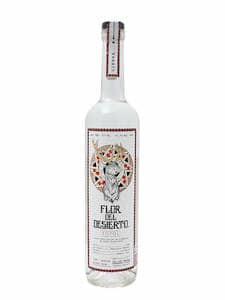
Type of Dasylirion: Wheeleri
ABV: 47.5%
Sotolero/Distiller: Jose Armando Fernandez Flores
City: Madera
The Sierra bottle is probably my favorite Sotol sold by Flor del Desierto. It is made from the Dasylirion Wheeleri plant and produced in Madera, Chihuahua. The high amount of alcohol (95 proof) makes this spirit full of flavor.
The aromas are fresh and vegetal. You can smell herbs, asparagus, and even lettuce and taste eucalyptus and cilantro combined with spicy notes from cloves and a subtle sweetness. Even some notes of clay coming from the clay pot distillation shine through. Overall, a wonderful and highly recommended Sotol and one of the best choices for beginners.
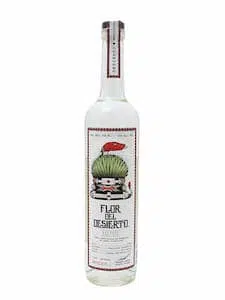
Type of Dasylirion: Leiophyllum
ABV: 45%
Sotolero/Distiller: Gerardo Ruelas Hernandez
City: Municipality of Coyame del Sotol
This Sotol is produced by Gerardo Ruelas. The Sotolero grew up in a Sotolero family and continues the tradition in the third generation. The spirit made of the Leiophyllum plant is double-distilled in traditional copper stills.
It has a slightly smoky and savory smell, and the mineral taste is typical for Sotol. The flavor is overall quite sweet compared to other Sotols. It even carries hints of sweet fruit like bananas.

Type of Dasylirion: Leiophyllum
ABV: 45%
Sotolero/Distiller: Gerardo Ruelas Hernandez
City: Municipality of Coyame del Sotol
Flor del Desierto Veneno is another release by master Sotolero Gerardo Ruelas. But, as opposed to his unaged "Desert" expression, this one is aged in Bourbon barrels and cured with venom from rattlesnakes. Yes, you got that right: venom from a rattlesnake. Unfortunately, this rarity won't make it to the US since spirits cured with venom are strictly prohibited.
I can't tell you much about the taste and aromas as I didn't have the chance yet to try this unique bottle of Sotol. However, I got to taste a similar bottle from the same brand called "Cascabel". Continue reading the paragraph below to find out more.
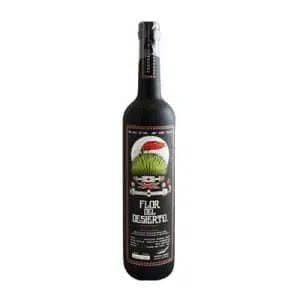
Type of Dasylirion: Leiophyllum
ABV: 48%
Sotolero/Distiller: Gerardo Ruelas Hernandez
City: Municipality of Coyame del Sotol
The name "Cascabel" translates to "rattlesnake". This time rattlesnake meat gets added during the final step of the distillation process. The spirit then ages in oak barrels for a few months before it's bottled and sold. And infusing alcohol with parts of a rattlesnake is not prohibited, so it happens you can get this bottle outside of Mexico, as well.
The aroma and look of this expression are highly unusual for a Sotol. The smell alone could make you believe that you're drinking Bourbon here. The flavors are not too bold but well-pronounced, with lots of meaty and mineral notes and just a touch of smoke. So you can taste something that remotely could be meat from a rattlesnake. If I hadn't known I don't think that would have been the first thought, but I did, so…
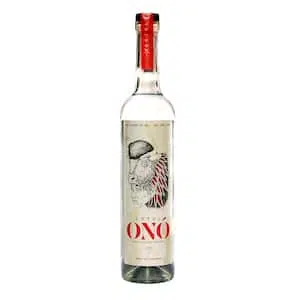
Type of Dasylirion: Cedrosanum
ABV: 45%
Sotolero/Distiller: Gerardo Ruelas Hernandez
City: Municipality of Coyame del Sotol
The Ono expression from Flor del Desierto is yet another spirit made by Gerardo Ruelas. But this time there's no reptile involved. The Sotol is made of Dasylirion Cedrosanum, which creates a complex, herbaceous, and fresh taste with herbal, vegetal, and spicy aromas.
On the palate, you even get some fruity notes of guava and coconut before the long and dry finish.
The bottles of Flor del Desierto are tall and slim. They're either transparent (Sierra and Desert) or black (Cascabel and Veneno). The sleek bottle stopper made from real wood is a nice touch to an overall elegant bottle design. nice accent.
Los Magos Sotol is an excellent Sotol made of 100% organic Sotol plants. In an effort to showcase the beauty and magic of Sotol, the two founders of Los Magos (engl. "the magicians"), Eduardo Almanza, and Juan Pablo Carvajal, created this exquisite spirit. By searching for traditional Sotol makers, they want to bring an authentic version of Sotol to the people and do its traditions and history justice.
The flavor profile of Los Magos is earthy, salty, spicy, and has a delicate smoky note. Herbal and leather aromas complement these savory flavors. Although this Sotol did not age in barrels, it has fine woody notes.
Los Magos Blanco Sotol is made of plants that primarily grow in prairie grasslands. Therefore the taste is clean with notes of herbs and citrus. It has a light body and a very smooth finish.
The nose is elegant and masculine, with a subtle smokiness and notes of leather, herbs, wood, and spices. In the background, you can also smell a slight saline note. very
On the palate, Los Magos isn't much different from the nose. The smoky, salty, and spicy flavors are complemented by a subtle vegetal sweetness. The fascinating part to me is the wooden flavor in the spirit. It tastes as if this Blanco expression has been barrel-aged. fascinating
The aftertaste offers more salty and spicy flavors with a hint of sweetness.
The smoky and spicy flavors in the Sotol are slightly muted when served on ice. In return, the salinity is a bit more pronounced, as are citrusy notes in the spirit. The balance of flavors is even better compared to trying it neat. In exchange, this reduces the overall intensity of flavors.
Los Magos works excellent in cocktails like a Negroni or a Sotol Sour. For the latter, I used a twist on our Mezcal Sour recipe and replaced Mezcal with Los Magos Blanco. The result is slightly more refined, less smoky, and overall outstanding. The slight salinity in the spirit helps the drink to taste even more complex.
For our Neroni twist, we used Sotol instead of gin and added half an ounce of coffee liqueur. The flavor combination of coffee, herbs, bitterness, and sweetness matches remarkably well. It reminded me of a Mezcal Negroni with less pronounced smoky flavors.
After trying these two drinks, it's fair to say that this Sotol should work great as a substitute for Mezcal in cocktail recipes. The taste of the final cocktail is slightly different, with more saline and less smoky flavors.
The bottle design of Los Magos Sotol Blanco is quite basic and rustic. The 750ml bottle has a round shape and a wooden bottle stopper containing a crystal-clear liquid.
The label design is quite elegant and of dark green color with copper-colored lettering. It includes the origin of the spirit (Chihuahua) and information about the Master Sotolero that crafted this spirit.
The early steps in the production process of Los Magos Sotol resemble that of Mezcal's production. Roasted and smoked in earthen pits, the plants are fermented. This roasting step is also the reason for its slightly smoky taste.
After fermentation, a three-step distillation process makes sure that the resulting Sotol is of the highest quality. Finally, it's bottled at 38% ABV (76 proof), making it a relatively low-ABV spirit.
Sotol is a distilled spirit produced in the Mexican desert. It is distilled from the Sotol plant, sometimes also called desert spoon, because of its iconic shape. This plant is a species of the genus Dasylirion. Common types are Dasylirion wheeleri, Dasylirion durangense, and Dasylirion leiophyllum.
The spirit is shaped by the terroir surrounding it, the atmosphere, and the region in which the plants used for it are growing. Comparable to Champagne or Prosecco, the artisanal liquor takes on the qualities of the soil. That not only makes every brand taste unique but also every batch.
For instance, if the plants grow in a dry area, the flavors will be earthy and peppery. If the Sotol plants grow in forest lands, flavors will be mossier with hints of eucalyptus.
Currently, Los Magos offers two different Sotols:
Soon, they will also add a WhistlePig edition. This limited edition release ages their Blanco expression in 10-year-old WhistlePig rye whiskey barrels.
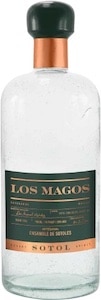
ABV: 38% (76 proof)
Aged: -
Price: $55
Los Magos Sotol Blanco is made from 100% Sotol plant. There are no additives used, and all plants are sourced sustainably. After a triple distillation process, the spirit rests for a short time before it's bottled.
The liquor from the Chihuahuan desert has a complex flavor profile. The sweet hints of honey and fresh flavors like citrus mix with spicy and peppery notes. And there's also a distinct but light smoky taste to it.
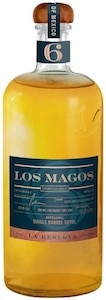
ABV: 42%
Aged: 6 years
Price: $300 (MSRP)
There aren't that many brands producing high-quality Sotol. Los Magos' Reserva Sotol expression ages for six years. And it's not comparable to Mezcal, let alone Tequila. So there's probably no other brand at the moment that released such a rare product.
The plan was to release the spirit in early 2022, but to online shoppers only. Apparently, it's available for purchase at selected retailers. -The price for one bottle is $300.
I didn't have the chance to try it yes, but surely, the small-batch release is exquisite. After aging for six years, the flavors should be even more complex and rounder. If you want to grab a bottle, try to be quick once it's out because Los Magos announced that the batch only makes 1,000 liters of the aged Sotol.
The company behind the Los Magos brand is Los Magos Spirits International (LMSI). It was founded back in 2020 by Eduardo Almanza and Juan Pablo Carvajal to grow the sales of Los Magos Sotol.
However, the Sotol from Los Magos has been available since 2014. The initial idea was to create a spirit that brings ancient traditions closer to a more modern audience by using an artisanal approach. But then the Sotol started to draw attention not only from spirit enthusiasts but also from bartenders. Hence, LMSI was founded to help grow the brand. As the brand is still relatively small, it heavily relies on its commitment to producing a Sotol of unparalleled quality.
The first big step in the expansion was the launch in the US. And this makes a lot of sense considering the big neighbor already is the number one consumer of other Mexican spirits like Tequila -and lately also Mezcal.
Sotol is an up-and-coming spirit, but the number of quality brands is still low. The following two brands are worth mentioning, though:
Hacienda de Chihuahua is a Sotol brand from Mexico, located in the city center of Chihuahua. The Hacienda was the first company to bring Sotol across the borders of Mexico into the US and brought international awareness to the spirit made from the desert spoon plant.
Sotol from Hacienda de Chihuahua has a long-standing tradition. The distillery in Northern Mexico has been producing the earthy spirit for more than 140 years.
Hacienda de Chihuahua has a selection of nine different Sotols and Sotol-based products on offer. Seven of them are actual Sotol, and two are liqueurs.
| Product | Style | ABV | Price |
|---|---|---|---|
| Sotol Plata | Joven | 38% | $32 |
| Sotol Rústico | Joven | 45% | $35 |
| Sotol Platinum | Joven | 38% | $40 |
| Sotol Reposado | Reposado | 40% | $40 |
| Sotol Añejo | Añejo | 38% | $45 |
| Sotol Oro Puro | Añejo | 38% | $65 |
| H5 | Extra Añejo | 38% | $125 |
| Crema de Sotol Chocolate | Creme liqueur | 17% | $28 |
| Crema de Sotol Nuez | Creme liqueur | 17% | $28 |
All expressions follow a long tradition, and a lot of expertise goes into the production process. Thus, for all their products, they harvest only naturally grown, wild sotol plants to preserve the organic character of the spirit.
Hacienda de Chihuahua offers a selection of nine different Sotols. Or actually, it's seven Sotols and two liqueurs.
They follow a long tradition and a lot of expertise goes into the production process. Thus, for all their expressions, they harvest only naturally grown, wild sotol plants to preserve the organic character of the spirit.

Style: Joven
ABV: 38%
Taste: minty, vegetal, slightly sweet
Price: $32 per 750ml bottle
Hacienda de Chihuahua Sotol Plata is an unaged Joven-style Sotol of 38% ABV. Tastewise, this Sotol has fresh, minty, and vegetal flavors with a sweet aroma. The master distiller responsible for producing it is José Daumas Gil de Partearroyo. He and his team slowly cook the desert spoon plants before they are fermented and distilled.
At only 76 proof, it is relatively mild and smooth. The plants used for Sotol Plata need to grow for about 12 -15 years.
The flavors in this Sotol are very earthy and vegetal. It reminds me of a Tequila with muted flavors and a slightly thinner consistency. Due to its low ABV, it's a little too watery.
It was okay when tasting neat, but I preferred it in mixed cocktails instead of Tequila. Try to make a Sotol Margarita or Paloma with it.
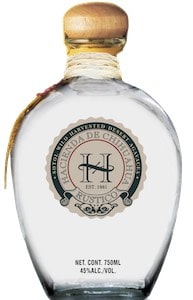
Style: Joven
ABV: 45%
Taste: herbal, slightly earthy, and grassy
Price: approx. $35 per 750ml bottle
Sotol Rústico is another unaged, Joven Sotol from Hacienda de Chihuahua. The flavors in this Sotol are grassy, spicy, and vegetal, with notes of lime, pepper, and hay. It contains significantly more alcohol (45%) than the Plata expression and is produced by the same master distiller.
This expression is not overly complex but more aromatic and flavorful than Sotol Plata.
Sotol Rústico has more aroma and bolder flavors, but due to the ABV of 45%, it also comes with a relatively harsh alcoholic bite. The nose offers dominant vegetal and grassy aromas like hay, fennel, and asparagus.
The taste is sweet, with citrusy flavors and peppery notes. You can also taste more grassy notes as well as a distinct minerality in the background. I highly recommend it as a base spirit in mixed drinks, but it's not the most elegant Sotol to sip neat.
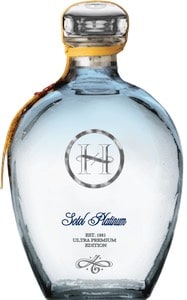
Style: Joven
ABV: 38%
Taste: spicy, herbal, slightly sweet
Price: approx. $40 per 750ml bottle
Hacienda de Chihuahua Sotol Platinum is a triple-distilled premium version of their Sotol Plata. Like the Plata expression, this expression also uses plants that mature for a minimum of 15 years and has the same ABV of 38%. The aroma is sweet and spicy with a slightly alcoholic bite. On the palate, there's more sweetness with spicy and fruity notes and a bitter finish.
Sotol Platinum has a low alcohol content of 38% and is a smooth spirit with a fresh nose and taste. However, just like the Plata, it's slightly too watery.
The Platinum Sotol is pretty similar to the Plata expression but has more pronounced sweet notes. The sweet flavors in the spirit are complemented by fruity notes like apricot, quince, pear, and melon. It has slightly more body than the Plata expression and a distinct bitter and spicy finish with hints of chocolate and white pepper.
The taste falls a little flat but works when mixed into cocktails. For most, it might not be worth the extra $$.

Style: Reposado
ABV: 40%
Taste: oak, herbal, earthy, vanilla
Price: approx. $40 per 750ml bottle
The only Reposado Sotol from Hacienda de Chihuahua ages 12 months in new French oak barrels and achieves a pale golden color before being bottled at 40% ABV. It has a sweet taste with hints of licorice, vanilla notes, and a slightly bitter aftertaste.
It's smooth and more complex than the clear, unaged versions, with notes of pepper, vanilla, and oak developed from maturing in wooden barrels.
Hacienda de Chihuahua Sotol Reposado is a smooth sipping Sotol, without any harsh alcoholic notes. It's sweet and floral in the nose with distinct vanilla notes from barrel aging. The taste is also more on the sweet side and offers notes of licorice and vanilla. You can also taste underlying earthy and floral notes that complement the sweetness.
To me, it's an elegant and affordable Soto ideal for sipping. It's complex in taste, smooth, and has an overall pleasant flavor profile.
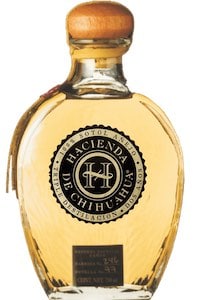
Style: Añejo
ABV: 38%
Taste: oak, herbal, earthy, vanilla, spices
Price: approx. $45 per 750ml bottle
Hacienda de Chihuahua's Sotol Añejo matures for 24 months in numbered French oak barrels to develop a beautiful golden color. Like most other expressions, it's low in alcohol (38%) which makes it comparably mild. It offers a robust but never overpowering flavor profile with rich notes of vanilla and oak.
You either love it or hate it. The low alcohol content ensures that the Sotol is particularly balanced and mild. Many like it exactly because of this, while others find it too mild and therefore not worth the money.
The nose is complex but mild and offers intense oak and vanilla aromas that pair with sweet, floral, fruity, and mossy notes. On the palate, you primarily get sweetness with notes of spices, oranges, honey, vanilla, and mint.
I would describe the flavors as complex yet restrained. You get different flavors, but none is overly pronounced or overpowering. It's a very subtle spirit with delicate notes. If you're looking for a flavor explosion, that's not the spirit for you.
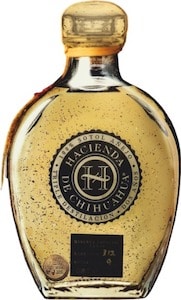
Style: Añejo
ABV: 38%
Taste: oak, herbal, earthy, vanilla, spices
Price: approx. $65 per 750ml bottle
The Sotol Oro Puro from Hacienda de Chihuahua contains 38% ABV and has distinct vanilla and oak notes with hints of spices. It is basically their Añejo Sotol upgraded with real gold flakes. The addition of gold flakes is supposed to enhance the texture and smoothness of the Sotol. Tastewise, the flavor profile is more or less the same as the Añejo expression, but it costs $20 more per bottle.
As for the Oro Puro, I don't mind the gold flakes. I tasted it together with the regular Añejo, and it has the exact same aromas and flavors. It has a mild yet complex nose with oak and vanilla notes. On the palate, there's the same combination of sweet and spicy with notes of oranges, vanilla, and wood.
If you like the idea of the gold flakes and can get a hand on it, it might be a nice extra for some - perhaps for gifting.
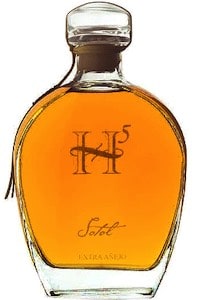
Style: Extra Añejo
ABV: 38%
Taste: fruit, caramel, oak, vanilla
Price: approx. $125 per 750ml bottle
Sotol H5 is an Extra Añejo version that matures for at least five years in French white oak barrels, and Hacienda de Chihuahua takes great pride in this high-quality product. It has an alcohol content of 38% ABV and a beautifully sweet and fruity aroma with rich chocolate notes. The taste is also predominantly sweet and chocolatey with hints of spices.
Compared to all other products of Hacienda de Chihuahua, the H5 Sotol has a significantly thicker body and bold, sweet flavors. The finish is extensive and also shows rich chocolate, cocoa, and caramel notes.
The nose is full of sweet notes with distinct caramel and chocolate aromas. You can also smell vanilla, oak, and spices that complement the overall sweet scent well.
The first sip is sweet and oaky with lots of caramel flavors. The flavors develop and show notes of brown sugar, wooden spice, vanilla, chocolate, and hints of cooked agave. Bittersweet chocolate and cocoa are the dominant flavors in this Sotol and also show in the finish.
The H5 takes Sotol to the next level. It comes with the expected high price tag, though. It's an excellent Sotol for sipping as it's super smooth, easy to drink, and has a rich and flavorful body.
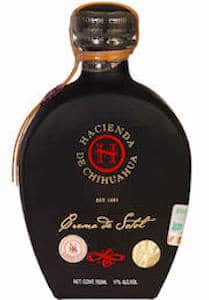
ABV: 17%
Taste: nuts
Price: approx. $28 per 750ml bottle
Crema de Sotol Nuez is a sweet, smooth, rich liqueur with a nutty flavor. It has a low alcohol content of only 17% and a rich and creamy texture. The overall concept is comparable to that of Irish cream, enhanced by flavors of nuts and Sotol shining through.
Crema de Sotol is a well-balanced liqueur based on Sotol. Its taste is sweet, and creamy, and contains distinct nutty notes from pecan nuts. The Sotol base brings earthy and vegetal flavors to the liqueur that pairs well with the natural pecan nut flavor.
Tastewise, the liqueur tastes like a cross between Baileys and Frangelico but with a hint of vegetal notes. It's super easy to drink and a winner if you have a sweet tooth.
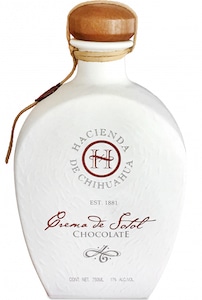
ABV: 17%
Taste: chocolate
Price: approx. 28USD/750ml
Besides the classic Crema de Sotol, Hacienda de Chihuahua also offers a chocolate-flavored expression. It has an excellent warm chocolate flavor with a bit of an alcoholic bite to cut through the sweetness. It contains only 17% alcohol and is an ideal dessert liqueur to sip after a meal.
Crema de Sotol Chocolate follows the same principle as Crema de Sotol Nuez. The combination of Sotol and chocolate go well together and make for a tasty sip.
Crema de Sotol Chocolate has a sweet and chocolatey aroma. On the palate, it's super smooth and creamy, with an excellent flavor combination of warm milk chocolate, dark chocolate, and Sotol.
Sotol is a Mexican spirit made from Dasylirion wheeleri, which is also called desert spoon. Generally, Sotol is comparable to Tequila and Mezcal. However, there are some differences because Sotol is made from a slightly different type of plant and is less regulated. Sotol is considered the official drink of Chihuahua, the largest state in Mexico, and can only be produced in the states of Chihuahua, Coahuila, and Durango.
Hacienda de Chihuahua is called Hacienda Tapalaopa, and its Manor House was established in 1881. Putting Chihuahua on the label hints at its location and Sotol being the state spirit of Chihuahua.
The Hacienda began producing Sotol from naturally growing Sotol plants in the mountains of Chihuahua primarily for the landowners and guests of the Manor. But during the 20th century, that started to change, and Hacienda de Chihuahua started selling its Sotol.
The current master distiller is José Daumas, who graduated in France and had previously worked for Martell and Moët Chandon, among others.
He combines the long tradition and experience in the Sotol-making of Hacienda de Chihuahua with the knowledge and craftsmanship behind the renowned French luxury brands.
By the way, the Hacienda de Chihuahua website is sotol.com. That manifests the role they play in the world of Sotol, yet, some get confused by them not using their name.
The company behind it is Vinomex. And that is not a big player who bought Hacienda de Chihuahua. It's been the business name behind the spirit all along since 1881.
Following the example of Tito's Handmade Vodka, which paved the way for legally operating distilleries in Texas, Desert Door Distillery set up their Sotol business near Dripping Springs, just a few miles outside of Austin.
Their objective is to introduce the still relatively unknown Mexican spirit Sotol to a broader mass.
For those who might not have heard of Sotol: like its more famous relatives, Tequila and Mezcal, Sotol is a traditional Mexican spirit made from agave plants. It is also the state spirit of Chihuahua, Coahuila, and Durango.
And Desert Door Texas Sotol is the first, and as of today, the only Sotol distillery in the United States producing this underrated drink.
In fact, until this day, Desert Door Distillery is the only facility producing Sotol outside of Mexico at all.
So how did Desert Door Distillery emerge with the idea of producing a spirit barely known outside of Mexiko?
As ever so often with unusual business ideas, coincidence played a considerable role in the plan of opening a Sotol Distillery.
In 2016, students and military veterans Judson Kauffman, Brent Looby, and Ryan Campbell attended a course on entrepreneurship at the University of Texas McCombs School of Business.
And allegedly, one day, as you do, they hung out in a college parking garage drinking Sotol before class.
Because they found the spirit quite enjoyable, they decided to make it the center of a group project for their studies where they should present a fictional company.
One thing led to another, and less than two years later, in late 2017, they opened their distillery Desert Door Texas Sotol.
The time between starting the University project and the actual opening of the Sotol distillery certainly involved a lot of try and error, sweat, and tears. Probably, the years after that weren't much different.
The three of them first learned how to make alcohol. Then harvested the Sotol plants in West Texas, fermented them in a bathtub at one of their houses, then distilled the mixture in a garage over the weekends.
As Brent Looby recalled in an interview from 2021, if they had known how hard starting a business like this was at the get-go, they might have never done it. A statement many entrepreneurs will certainly agree with.
And what's also worth mentioning, Kauffman, Looby, and Campbell did all that without ever setting foot into a traditional Sotol.
They say they made a conscious business choice to save themselves from comparing their approach to others and create their own concept.
Already in 2018, Desert Door Texas Sotol was distilling up to 400 gallons of Sotol a month. And they had plans to triple that in no time.
I don't know their current production volume. But it is enough to employ a team of 60 people, so it seems they do alright.
The Desert Door Distillery now has a tasting room, a bar, a patio with comfy picnic tables, and a stage for live music. You can book tastings or order beautiful Sotol cocktails alongside charcuterie boards.
Should you get hungry beyond charcuterie boards -or get the munchies from all the tasting and cocktail-sipping- food trucks park right outside the distillery.
And if you want to read in detail how Desert Door Distillery produces their Sotol today - now that they outgrew the bathtub and garage situation for good - you can do so here.
Sotol often gets mentioned in line with Mezcal and Tequila. For one, of course, because all three have their roots in Mexico. And then it's because all three have a similar base.
For a long time, the plant that is the base for Sotol, the Dasylirion wheeleri (also known as desert spoon or Sotol plant), belonged to the agave family.
Now it doesn't anymore. And therefore, Sotol is now a cousin instead of a brother of Mezcal and Tequila, so to say.
The taste of Sotol is closer to Tequila than to Mezcal. It can be described as somewhat bright, earthy, and grassy, but with a more smooth and silky mouthfeel.
Further, its taste strongly depends on the territory where the Sotol plants grow and can be smoky or carry more vegetal notes. If you want to know more about it, check out this article about Sotol.
The Sotol from Texas is an artisan, high-quality spirit available in two versions. The first one is the original release, the other an oak-aged variation.
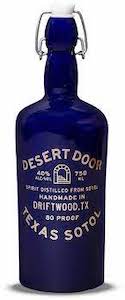
The nose of the Desert Door Original is reminiscent of a good Tequila with vanilla and grass notes.
Taste-wise it carries subtle flavors of toffee, mint, and citrus fruits. The smooth finish reveals a hint of sage.
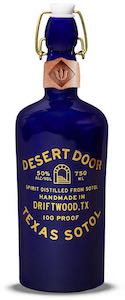
The Desert Door Oak-Aged Sotol matures for about one year in virgin. The nose is comparable to a young Whiskey, with sweet notes of vanilla and caramel.
On sipping, you get more vanilla, oak, and an aroma of dried cherries. The finish shows a subtle hint of Eucalyptus.
Both versions are a superb choice if you are new to Sotol. They are smooth, fresh, and herbal with a little bit of bite.
And both versions are enjoyable neat, or over ice, even though the aged version is more pleasant that way.
However, personally (with a few exceptions), I'm not overly into sipping spirits neat but prefer them in a good cocktail.
Basically, you can use Desert Door Sotol for all cocktails that usually include Tequila, like a Margarita or Paloma.
Military veterans Judson Kauffman, Brent Looby, and Ryan Campbell own Desert Door Distillery in Texas. They met during their studies and got the idea for distilling Sotol during a course on entrepreneurship.
Desert Door Sotol is produced in Driftwood, Texas. That's a place a few miles outside of Austin, near a small town called Dripping Springs.
Nope, at this point in time, Desert Door exclusively produces Sotol at their distillery. It also doesn't seem that there are plans to change that anytime soon.
Yes, there is a Desert Door Hand Sanitizer out there. Like many in the industry, Desert Door Distillery started manufacturing hand sanitizer when Covid hit in 2020.
They did so full time, focussing on equipping first responders, the FBI, nursing homes, restaurants, and health care workers.
The traditional Mexican way is to drink Sotol neat. But it is also a beautiful substitute for Tequila in cocktails like a Margarita or a Paloma.
The main difference is that Sotol is not made from agave. And Tequila is strictly restricted in terms of the plants and the production area, which Sotol is not. The taste overall is comparable to that of Tequila.
Sotol could be the new rising star in the sky when it comes to spirits from Mexico. The liquor started gaining traction recently, yet Sotol is still far from mainstream.
As producers of tequila and mezcal struggle with agave shortage, the rise in interest in Sotol doesn't come as a surprise. Learn what makes this non-agave spirit unique, how to drink it, and how it's made.
Sotol is a unique Mexican distillate obtained from the shrub Dasylirion wheeleri, native to the Chihuahuan Desert and commonly known as a desert spoon. This flowering plant typically grows on limestone and is native to West Texas, the southern parts of New Mexico and Arizona, northern Mexico, and Oaxaca.
That also means that contrary to popular belief, sotol is not made from agave like tequila and mezcal. Instead, it is derived from the essence of the spiny leaves of this succulent plant called desert spoon.
The resulting liquor is a clear to amber-colored spirit widely popular in Chihuahua, Durango, and Coahuila. It is available in three different types of Sotol:
In addition to this, there are also Sotol curados. Curds are sweeter versions of the spirit, almost like a liqueur, and are traditionally drunk after dinner. Those are often flavored with pecan, raisins, or cinnamon and infused with herbs and botanicals.
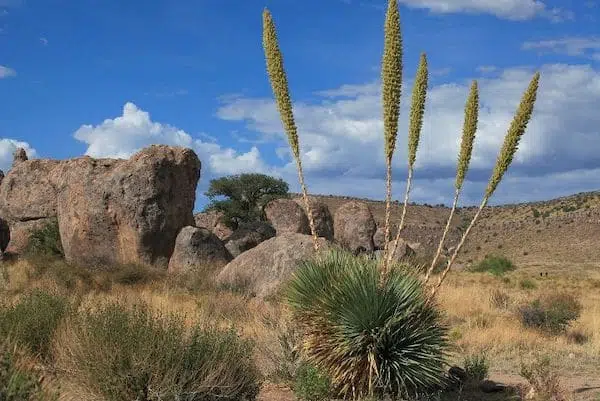
Sotol is made from a plant called Dasylirion wheeleri, commonly known as Desert Spoon, Sotol, or Common Sotol. It is a distinctive member of the Lily Family (Liliaceae). This perennial shrub boasts a captivating rosette of long, spiny leaves, often likened to an evergreen plant and is native to regions spanning from western Texas to southern Arizona.
Its slender, tough leaves are utilized for crafting mats, baskets, and thatching but also play a major role in Sotol production. The plant's flowering characteristics are equally remarkable, with numerous tiny greenish-white flowers arranged in a long, narrow cluster that emerges from the dense leaf cluster.
The smaller Smooth-leaved Sotol (D. leiophyllum) is a close relative, recognizable by its teeth curving towards the leaf base. This resilient shrub, thriving in rocky desert slopes, holds immense value both in cultural practices and as a striking desert ornament.
The process of making sotol mirrors the traditional processes employed in mezcal production. A sotol distillery, known as a vinata, the sotolero (sotol distiller) begins by excavating a pit in the ground. In this pit, the sotol plant is roasted in a conical oven, using locally sourced firewood such as oak or mesquite, which imparts a unique regional flavor.
The whole roasting process lasts three to four days and softens the plant material, which is then milled into a pulp and pressed to extract the sugary, sweet sap. Following this, the sap undergoes a fermentation process in rectangular wooden vats, typically around 4 to 5 days in desert areas and 5 to 7 days in cooler forest regions.
Similar to mezcal, this ancient process retains a rustic charm, as the maestro sotolero relies on taste and sound cues to gauge the fermentation's completion. Referred to as vino at this point, the liquid is then distilled using copper or steel pot stills.
The sotolero employs a unique method to determine the desired alcohol concentration, usually around 50% (100 proof). By pouring the liquid into a cow horn and transferring it back and forth between two horns, the appearance, and movement of "pearls" or bubbles are observed, indicating the alcohol level. Needless to say, this technique requires decades to master.
While many sotols are unaged, referred to as Plata, Joven, or young, some undergo barrel aging. Hacienda de Chihuahua, for instance, offers aged variations like reposado and añejo, akin to specifying the age of Tequila. This intricate and traditional process results in a diverse range of sotols, each reflecting the distinct terroir of the region.
You can break down the process of making Sotol into these six steps:
In short, the taste of sotol can be remarkably complex. Its unique combination of bright and grassy aroma, pine-like flavor, and potential for earthy or vegetal undertones creates a distinctive tasting experience that sets it apart from other agave-based spirits.
Compared to crisp tequila or often-smoky mezcal, sotol tends to be bright and grassy. Depending on how and where the spirit is made some bottlings can have musky, earthy, or vegetal characteristics. It’s not unusual for some to liken Sotol’s funky aroma to sweaty socks.
Sotol's flavor is often characterized by a crisp and clean profile with a distinct pine-like quality. This is complemented by a sappy brightness that shines through the liquor. Some variations exhibit a pronounced minerality, while others feature hints of lemongrass or even a green note reminiscent of the heat found in fresh jalapeño peppers. That all depends on where the specific plants are growing and where the spirit is produced.
Sotol plants that grow in forests have a different flavor profile than desert-grown plants. So the outcome highly depends on where the raw product is harvested. Plants from forests tend to have distinct notes of mint and eucalyptus, whereas its desert-grown brothers have more leathery and earthy notes.

Sotol is traditionally enjoyed neat in Mexico, sipped from a small glass or copita. Some Mexicans also prefer beer on the side to refresh the palate. In addition to sipping it straight, you can enjoy sotol in various infusions known as curados. These sweet infusions are flavored with locally sourced ingredients, such as the popular pecan-cinnamon-raisin curado.
In the U.S., sotol is gradually gaining recognition, often paired with tequila in cocktails, similar to the way bartenders introduced mezcal to the masses. As sotol becomes more accessible and familiar to consumers, it's poised to shine in the cocktail scene.
The Mexican spirit also pairs well with lime juice, making it an excellent substitute for tequila in a Margarita or Paloma cocktail.
Besides Mexican-made sotol bottlings available in the U.S., such as Hacienda de Chihuahua, Sotol Por Siempre, and the upcoming Sotol Clande, Texan producers have also embraced the spirit. But how can a Mexican spirit be produced in the United States?
Due to intricate legal intricacies, American companies are permitted to craft sotol. For instance, Desert Door Distillery, established in 2017 in Driftwood, Texas, just outside of Austin, proudly asserts itself as the pioneer in producing sotol from domestically grown plants. These plants are carefully wild-harvested from ranches in West Texas.
Other Texan sotol producers besides Desert Door Sotol that have emerged in recent years include Genius Liquids and Marfa Spirit Co. The latter has garnered recognition for its collaborative efforts with Mexican growers and respect for their authentic claim to the spirit.
The possibility of sotol production in the United States arises from a unique set of circumstances. In 2002, the Mexican government established a denomination of origin for sotol, reserving the term exclusively for the spirit produced within specific Mexican states.
That is comparable to other regulations like governing champagne's origin in France, this safeguard ensures that sotol reflects the distinct attributes of certain Mexican regions.
Notably, a similar denomination of origin was negotiated during the North American Free Trade Agreement (NAFTA) era in 1994, protecting Mexico's exclusive rights to tequila and mezcal production in the U.S. and Canada.
However, with the replacement of NAFTA by the United States-Mexico-Canada Agreement (USMCA) in 2020, sotol's designation was initially proposed but eventually omitted from the final agreement. This loophole leaves tequila and mezcal as the sole spirits with Mexico's exclusive production rights.
The main difference between sotol and tequila or mezcal is that it's crafted from the sotol plant, while tequila and mezcal originate from various agave species. Tequila is exclusively produced from the blue Weber agave species, Agave tequilana, within specific Mexican regions. Mezcal, on the other hand, can be derived from over 30 agave varieties.
Sotol's advantage lies in its wild harvesting, while agave plants for tequila and mezcal require uprooting, leading to replanting. Tequila's agave hearts are steam-baked, while mezcal and traditional sotol share a similar roasting process using earthen ovens.
The roots of the spirit are in Chihuahua. But the plant is growing between Texas, Arizona, and New Mexico in the US, down to Oaxaca in southern Mexico.
Sotol plants stay intact after harvesting, whereas agave plants are dug out and replanted afterward. So Sotol is more sustainable in that regard.
The sotol plants need about 12-15 years to reach maturity (compared to 6-8 years for blue Weber agave). And as they are growing in the wild, they are vulnerable to being eaten by rodents.
Sotol's production is often considered ecologically less disruptive compared to agave's resource-intensive farming practices. While climate change poses sustainability challenges to both plants, mass sotol production also has effects on the local marine ecosystem.
Regarding flavor, tequila offers a citrusy profile, while mezcal is known for its smokiness. Sotol is often described as smoother and more approachable than its agave-based counterparts being closer to tequila than to mezcal. To fully appreciate these nuanced flavor distinctions, experiencing sotol firsthand through neat tasting is recommended to detect the delicate flavors of the terroir.
Finally, if you like to try Sotol and learn more about individual brands and their production, check out these articles: